
The term "Middle East" is widely used to describe a region that spans parts of Asia, Africa, and Europe. It is a geopolitically significant area, home to diverse cultures, rich histories, and vast natural resources, especially oil. The countries generally included in the Middle East are:
Western Asia: Saudi Arabia, Iran, Iraq, Israel, Jordan, Lebanon, Syria, Turkey, Armenia, and Azerbaijan.
North Africa: Egypt, Libya, Sudan, and Tunisia.
Other regions sometimes included: Cyprus, depending on the context, may also be considered part of the Middle East.
The region plays a critical role in global politics, economy, and religion, housing the birthplace of major world religions such as Islam, Christianity, and Judaism.
The term “Middle East” was coined in the late 19th century by the British historian and geographer Alfred Thayer Mahan. He used it to describe the region between Europe and East Asia, essentially serving as a middle ground on the global trade routes. Originally, the term was meant to reflect a strategic location in relation to the British Empire's interests in India and the Far East.
While "Middle East" has become widely accepted in the global lexicon, its precise definition has evolved. Over time, it began to encompass the diverse political and cultural regions of Western Asia and parts of North Africa. Despite its European origins, the term continues to be relevant today, though it is sometimes critiqued for its Eurocentric perspective.
In conclusion, the Middle East is a historically rich and geopolitically strategic region. Understanding the origins and geographical scope of this term is essential to grasping the region’s profound global influence and its complex cultural and political dynamics.

One of the first surprises awaiting tourists at Dubai International Airport (DXB) is a complimentary Tourism SIM card, provided by du, one of the UAE’s leading telecom providers. This free SIM card includes 1GB of data valid for 24 hours, allowing travelers to immediately access maps, book rides, stay in touch with family, or post updates on social media as soon as they land.
This offer is available to:
Visitors arriving on visit visas
Transit visa holders
Travelers with visa-on-arrival
GCC nationals
Once through immigration, travelers can pick up the SIM at designated kiosks. For extended usage, plans can easily be upgraded at du counters or Dubai Duty Free outlets.
While du offers the complimentary SIM, other major telecom providers such as Etisalat and Virgin Mobile also have attractive prepaid SIM packages for tourists. These often come with:
More data
Longer validity periods
International calling minutes
Flexible plans suited for short- or long-term stays
Staying connected in the UAE is essential. From using ride-hailing apps like Careem or Uber to accessing translation tools, ticketing platforms, or navigation apps, having immediate internet access makes travel more seamless and stress-free.

Dubai, UAE – For many tourists, renting a luxury car and cruising down the UAE’s world-class highways is a dream experience. But this dream can quickly turn costly if drivers are unaware of the country’s strict traffic laws, especially when it comes to speeding.
Rental companies report that unaware visitors are racking up massive traffic fines, with one case involving a tourist being charged over Dh86,000 after initially accumulating Dh43,000 in violations. The tourist left the country before the fines were processed, leaving the rental company to bear the cost.
According to Soham Shah, CEO of SelfDrive Mobility, the issue is widespread. Tourists often don’t know about:
Strict speed limits
Radar enforcement zones
Limited grace thresholds
In one case, a customer received six speeding fines in five minutes, totaling over Dh1,000.
To combat these issues, UAE car rental companies have introduced new policies aimed at reducing risk and increasing awareness:
Companies like 7Cars Rent a Car now prefer credit card payments with pre-authorized holds to secure potential fine costs.
Rental firms are proactively educating tourists about UAE traffic laws, speed limits, and radar monitoring before they even hit the road.
SelfDrive Mobility sends real-time updates to customers during the rental period if any fines are incurred, helping avoid end-of-trip surprises.
Udrive has eliminated security deposits altogether, choosing instead to charge only for actual fines that appear in the system.
All fines in the UAE are linked to the car’s license plate and must be manually checked and assigned to the responsible driver by rental agencies.
If a customer disputes a fine, they can appeal directly to the RTA. If approved, the rental company must refund the full amount.
Legal expert Sunil Ambalavelil of NYK Lawyers explains that:
Rental firms can file civil claims to recover fines
This could lead to a travel ban for non-payment
Criminal complaints may be filed in cases of fraud or bounced cheques
Benny Thomas, CFO at Thrifty and Dollar Car Rental, notes that his company is partnering with tourism boards to raise awareness among visitors. The goal is to promote responsible driving through clear education, not just enforcement.
With better policies, education, and cooperation, UAE car rental companies are helping tourists drive smarter. Understanding the rules not only protects you from expensive surprises but also ensures your UAE experience is filled with scenic drives, not stress.

Planning a trip to the UAE? Travel experts are highlighting the essential steps every visitor should follow to ensure a smooth and successful UAE visit visa application.
With recent updates to visa requirements, it's more important than ever to meet all the necessary criteria to prevent delays or rejections that could impact your travel plans.
To apply for a UAE tourist or visit visa, applicants must prepare the following:
Confirmed Return or Onward Tickets
Travelers must provide proof of a return or onward journey to demonstrate their intention to leave the UAE before the visa expires.
Proof of Accommodation
This includes either a confirmed hotel reservation or an invitation letter from a UAE resident that includes their full address.
Financial Proof
Visitors may be required to show evidence of sufficient funds, such as recent bank statements or cash. It is generally recommended to carry between AED 2,500 and AED 3,000.
Printed Documents
Ensure you have printed copies of important documents like flight tickets and accommodation confirmations for inspection when needed.
Avoid these frequent errors that can complicate or delay your visa approval:
Incomplete Information for Minors
If you're applying for a minor, make sure to include full parental information and consent from both parents.
Submitting Multiple Applications
Filing more than one application for the same individual can cause issues and should be avoided.
Reapplying Immediately After Exit
It's advisable to wait at least one month after exiting the UAE before submitting a new visa application.
By carefully following these updated guidelines and steering clear of common mistakes, you can significantly increase your chances of a successful UAE visit visa application.
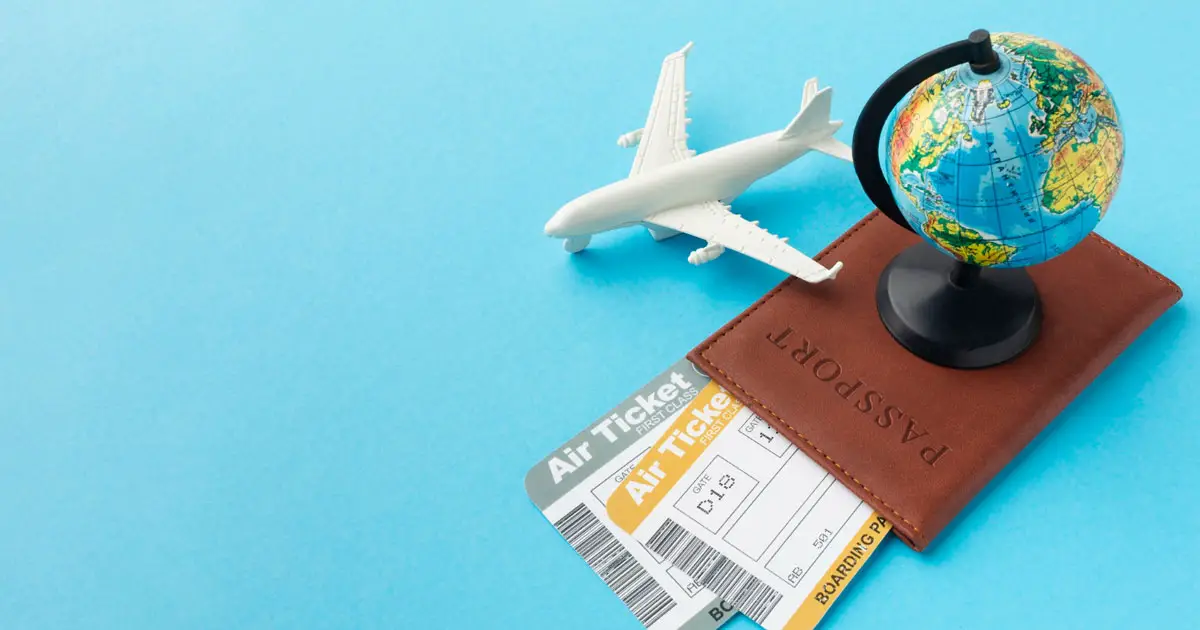
Dubai, UAE – May 8, 2025
Emirates Airlines has announced the commencement of a new daily non-stop service connecting Dubai to Hangzhou, China, starting July 30, 2025. This strategic expansion marks Hangzhou as Emirates' fifth gateway in mainland China, joining Beijing, Guangzhou, Shanghai, and Shenzhen.
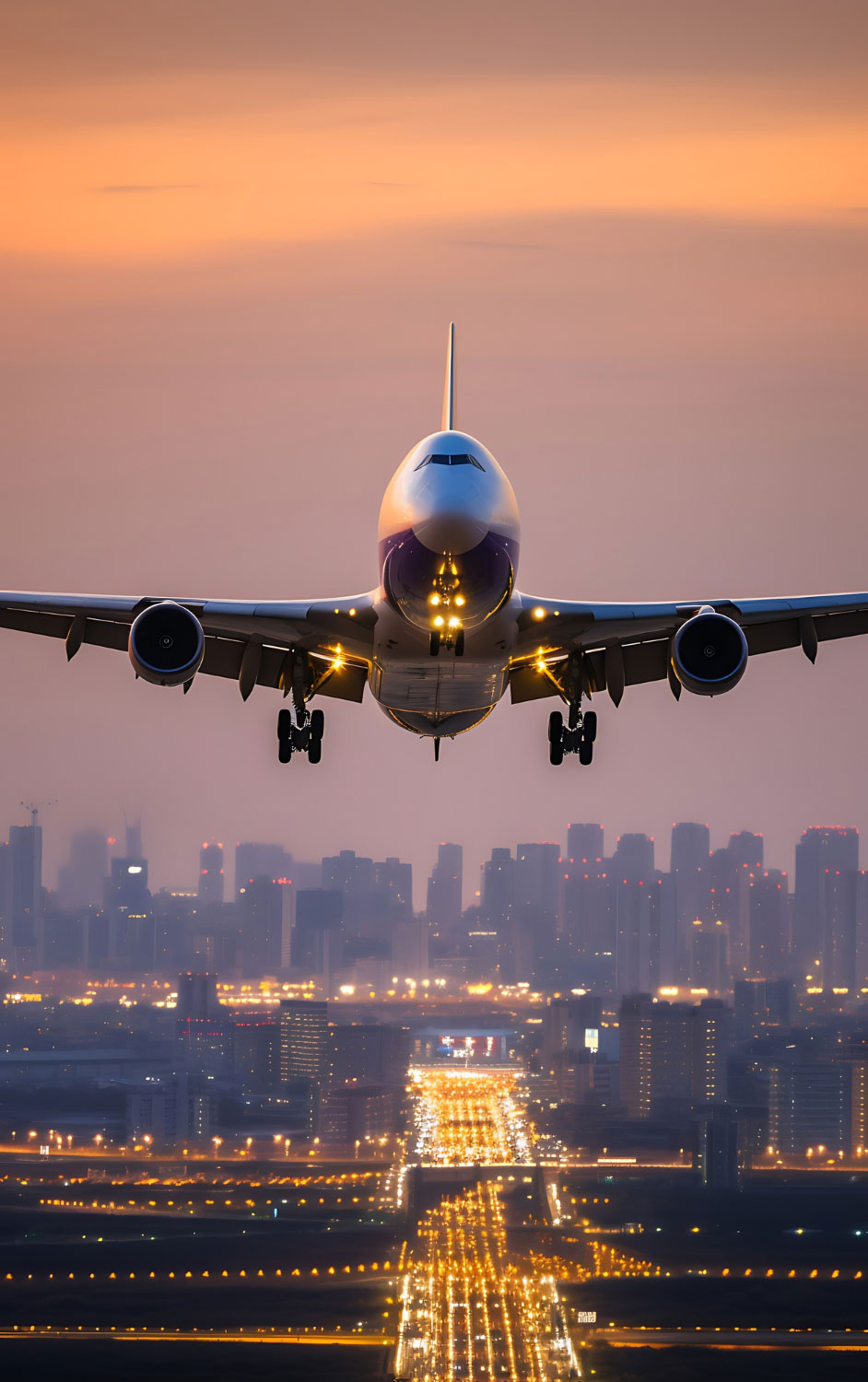
The new route will be operated using a three-class Boeing 777-300ER aircraft, offering a weekly capacity of 2,478 seats across Business, Premium Economy, and Economy cabins.
Flight EK310: Departs Dubai at 09:40 GST, arriving in Hangzhou at 22:00 CST.
Flight EK311: Departs Hangzhou at 00:10 CST, arriving in Dubai at 04:55 GST.
These timings are designed to facilitate seamless connections through Dubai's hub to various destinations across Europe, Africa, the Middle East, and the Americas.
Adnan Kazim, Emirates’ Deputy President and Chief Commercial Officer, emphasized the significance of this new route in enhancing the airline's operations in East Asia. Hangzhou's reputation as a center for innovation, e-commerce, and advanced manufacturing aligns with Emirates' commitment to fostering economic and cultural ties between the Middle East and China.

Hangzhou, renowned for its UNESCO-listed West Lake and as the headquarters of major tech companies, is a prime destination for both leisure and business travelers. The introduction of this daily service is expected to bolster tourism and business travel between the two regions, while also enhancing cargo connectivity to support the growing trade and logistics sectors.
With this addition, Emirates will operate 49 weekly flights to mainland China, including double daily services to Beijing and Shanghai, reinforcing its position as a key player in global aviation.
Stay tuned to GulfDN for more updates on international travel and aviation developments.

Doha, Qatar – [Current Date] – Qatar’s tourism sector has started 2025 on a strong note, welcoming 1.53 million international visitors in the first quarter, according to the latest data from Qatar Tourism. While this marks a slight 4% dip compared to Q1 2024 (1.6 million), industry experts highlight the country’s resilient appeal amid global economic fluctuations.
The GCC remains Qatar’s strongest market, contributing 36% of total arrivals, with Saudi Arabia leading the pack. European travelers accounted for 28%, while 20% came from Asia and Oceania, reflecting Qatar’s successful diversification strategy.
The recent Eid holiday was a major highlight, with 214,000 visitors over eight days—a 26% increase from 2024. GCC tourists surged by 18%, with many drawn by Qatar’s luxury shopping festivals and family-friendly events. Hotel occupancy during Eid hit 77%, up from 67% last year, with premium properties like the Mandarin Oriental Doha and Raffles Doha reporting near-full capacity.
Qatar’s 2024-2025 cruise season saw 87 ship calls (up 19% YoY) and over 360,000 passengers, reinforcing Doha’s position as a key Gulf cruise hub. The newly expanded Doha Port has been pivotal, accommodating mega-ships like MSC World Europa.
Q1’s success was boosted by high-profile events, including:
Web Summit Qatar (Feb 2025) – 15,000+ attendees
Doha Jewellery & Watches Exhibition (Feb 2025) – $1.2B in sales
Qatar International Food Festival (March 2025) – 150,000+ visitors
Looking ahead, Qatar is doubling down on mega-developments:
Simaisma Project (QR20 billion): A mixed-use waterfront district featuring a Six Flags theme park, luxury resorts, and a PGA-standard golf course (opening 2027).
Lusail’s Winter Wonderland: A new year-round entertainment zone set to launch in late 2025.
Qatar Tourism projects 3.5% annual growth, targeting 5.3 million visitors by year-end—up from 5.1 million in 2024. Key drivers include:
New air routes: 14 weekly flights to Moscow (operated by Qatar Airways and Aeroflot) and expanded connections to India and Southeast Asia.
Visa reforms: Extended transit visa-free stays (up to 96 hours) and streamlined GCC tourist permits.
Aligned with Qatar’s Third National Development Strategy (2024-2030), the country aims to hit 6 million annual visitors by 2030. Saad Al-Kharji, Chairman of Qatar Tourism, stated: “Our Q1 performance proves our strategy is working. With new attractions and global partnerships, we’re confident in sustained growth.”
Qatar’s post-World Cup strategy—shifting from event-driven tourism to a year-round destination—is paying off. By blending cultural heritage (Souq Waqif, Museum of Islamic Art), luxury (The Pearl-Qatar), and adventure (Qetaifan Island’s watersports), the nation is carving a unique niche in global tourism.
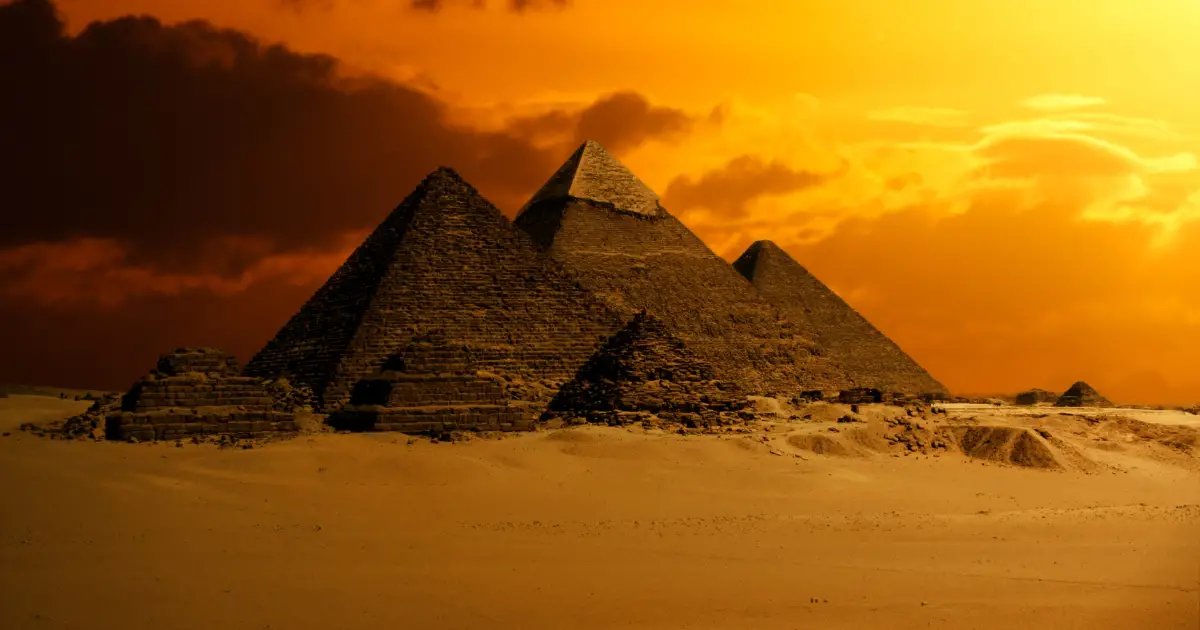
Egypt is a fascinating destination with ancient pyramids, vibrant cities, and stunning deserts, but travelers should take certain precautions for a safe and enjoyable trip. Here’s a detailed guide:
## *1. Safety & Security*
- *Check Travel Advisories*: Before departure, verify your government’s travel warnings (e.g., U.S. State Department or UK Foreign Office).
- *Avoid Border Areas*: Stay away from the Sinai Peninsula (except Sharm El-Sheikh and Dahab) and the Libya/Sudan borders due to instability.
- *Beware of Scams*: Taxis, tour guides, and vendors may overcharge. Negotiate prices beforehand and use ride-hailing apps (Uber/Careem) in Cairo.
- *Carry ID at All Times*: Police checkpoints are common; keep a copy of your passport.
## *2. Health Precautions*
- *Drink Bottled Water*: Tap water is not safe for drinking; avoid ice in drinks.
- *Eat Carefully*: Stick to well-cooked food, avoid raw salads, and eat at reputable restaurants.
- *Vaccinations*: Recommended vaccines include Hepatitis A, Typhoid, and routine shots (Tetanus, MMR).
- *Sun & Heat Protection*: Egypt can be extremely hot—wear sunscreen, a hat, and stay hydrated.
## *3. Cultural & Dress Code Tips*
- *Dress Modestly*: Especially in religious sites (mosques, churches) and rural areas. Women should cover shoulders and knees.
- *Respect Ramadan Customs*: Avoid eating/drinking in public during daylight hours if visiting during Ramadan.
- *Photography Rules*: Ask permission before photographing locals; some sites (museums, military zones) ban cameras.
## *4. Transportation & Travel Tips*
- *Use Licensed Taxis/Ride Apps*: Uber and Careem are safer than random street taxis.
- *Avoid Night Travel in Remote Areas*: Some roads lack proper lighting and security.
- *Domestic Flights/Trains*: Prefer flights for long distances (Cairo to Luxor/Aswan); overnight trains are a budget-friendly option.
## *5. Money & Communication*
- *Carry Small Cash (EGP)*: Many places don’t accept cards; ATMs are widely available.
- *Bargain Politely*: Markets (souks) expect haggling—start at 50% of the asking price.
- *Local SIM Card*: Buy from Vodafone/Orange/Etisalat for affordable data.
### *Final Advice*
Egypt is generally safe for tourists, but staying alert and informed ensures a smooth trip. Stick to tourist areas, respect local customs, and keep emergency contacts handy (e.g., your embassy, local police: 122).
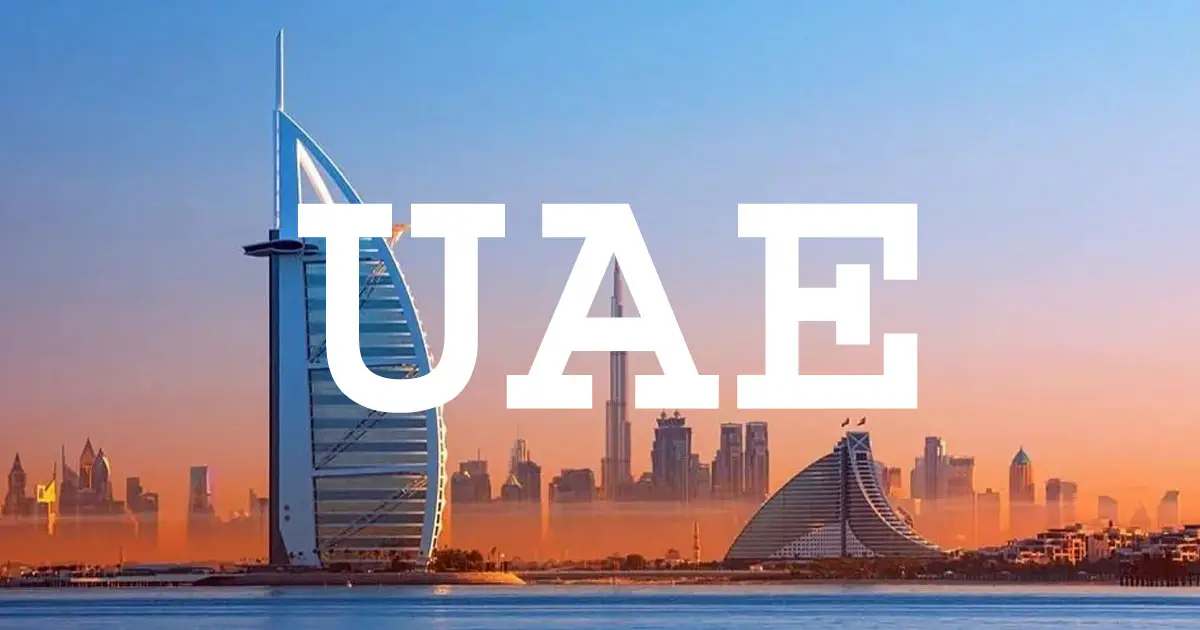
The United Arab Emirates (UAE) is a fascinating country that blends modern innovation with traditional Arabian culture. Known for its towering skyscrapers, luxurious shopping malls, and rich cultural heritage, the UAE offers a variety of attractions for travelers of all interests. Whether you’re a history buff, nature lover, or thrill-seeker, the UAE has something for everyone. Here are the top things to see in the UAE:
1. Burj Khalifa, Dubai
The Burj Khalifa is the tallest building in the world, standing at a staggering 828 meters (2,717 feet). Located in Dubai, this architectural marvel offers visitors an incredible panoramic view of the city from its observation decks on the 124th and 148th floors. A visit to the Burj Khalifa is a must for anyone traveling to the UAE, offering breathtaking views of Dubai’s skyline and the vast desert surrounding it.
2. The Palm Jumeirah, Dubai
The Palm Jumeirah is an artificial island in the shape of a palm tree, offering luxury resorts, restaurants, and entertainment options. It’s home to iconic landmarks like the Atlantis The Palm resort, known for its waterparks, aquariums, and beautiful beaches. Visitors can enjoy a scenic drive along the Palm’s crescent, take a monorail ride, or simply relax on the island’s pristine beaches.
3. Sheikh Zayed Grand Mosque, Abu Dhabi
The Sheikh Zayed Grand Mosque is a stunning example of Islamic architecture, located in the capital city of Abu Dhabi. With its grand white marble domes, 82 domes in total, and intricately designed interiors, it is one of the largest mosques in the world. Visitors can explore the mosque’s magnificent halls and courtyards, while also learning about the cultural and religious significance of the mosque.
4. Louvre Abu Dhabi
The Louvre Abu Dhabi is a world-class museum located in the UAE’s capital. Known for its futuristic design and vast collection of art from various cultures and eras, the museum brings together works from around the globe. The museum’s iconic dome is a masterpiece in itself, and its collection includes pieces from ancient civilizations to contemporary art. The Louvre Abu Dhabi is a must-see for art lovers and history enthusiasts.
5. Dubai Mall and Dubai Fountain
The Dubai Mall is one of the largest shopping centers in the world, offering over 1,200 stores, a massive indoor aquarium, an ice rink, and numerous dining options. Located adjacent to the Burj Khalifa, the Dubai Mall is also home to the Dubai Fountain, the world’s largest choreographed fountain system. The fountain shows, which take place daily in the evening, are a visual spectacle set to music, making it a must-see attraction in Dubai.
6. Al Ain Oasis
For those looking to experience the natural beauty of the UAE, Al Ain Oasis offers a peaceful retreat. Located in the city of Al Ain, this UNESCO World Heritage site is home to lush greenery, traditional falaj irrigation systems, and ancient date palm groves. Visitors can explore the oasis on foot or by bike, discovering a hidden gem of nature in the desert.
7. Dubai Desert Safari
A visit to the UAE wouldn’t be complete without experiencing the vast desert landscape. A desert safari is one of the most popular activities, where visitors can ride through the dunes in a 4x4 vehicle, go camel trekking, or even try sandboarding. Many tours also offer traditional Arabian experiences, including a barbecue dinner, cultural performances, and stargazing.
8. Fujairah’s Beaches and Mountains
The emirate of Fujairah, located on the eastern coast of the UAE, offers beautiful beaches along the Gulf of Oman. It’s also known for its dramatic mountainous landscapes, making it an ideal destination for hiking, nature walks, and water activities. Popular spots include the Snoopy Island, perfect for snorkeling, and the Fujairah Fort, a historic site dating back to the 16th century.
9. Al Bastakiya Quarter, Dubai
The Al Bastakiya Quarter, also known as the Al Fahidi Historical Neighborhood, is one of the oldest traditional neighborhoods in Dubai. This area offers a glimpse into the UAE’s past, with narrow lanes, wind towers, and historical buildings made from coral stone. It is home to art galleries, museums, and traditional cafés, making it a great place to explore Dubai’s heritage and culture.
10. Qasr Al Hosn, Abu Dhabi
Qasr Al Hosn is the oldest stone building in Abu Dhabi and once served as the royal residence and fort. The fort has been transformed into a museum, where visitors can learn about the history of Abu Dhabi and its development over the centuries. The site offers fascinating insights into the city’s transformation from a small fishing village to a global metropolis.
Conclusion
The UAE is a country full of contrasts—where the traditional meets the modern, and where the desert meets the sea. Whether you’re exploring the architectural wonders of Dubai, soaking in the cultural richness of Abu Dhabi, or venturing into the natural landscapes of Fujairah and Al Ain, the UAE offers something for every type of traveler. With its luxurious resorts, historical sites, and world-class attractions, the UAE remains one of the most exciting travel destinations in the Middle East.

Egypt is a country with a rich religious history, and its modern religious landscape is a reflection of this long-standing diversity. Today, the majority of Egyptians follow Islam, but there are also significant minorities practicing Christianity and smaller communities of other religious traditions. Here’s an overview of the major religions practiced in Egypt:
1. Islam (Sunni)
The dominant religion in Egypt is Islam, and the majority of Egyptians identify as Muslims—specifically, Sunni Muslims. It is estimated that about 90-95% of the population practices Islam.
Sunni Islam: The vast majority of Egyptian Muslims follow Sunni Islam, which is the largest branch of Islam worldwide. Sunni Muslims in Egypt adhere to the teachings of the four major Sunni schools of jurisprudence, with the Shafi'i school being the dominant one in Egypt.
Islamic Institutions: Egypt has a deep connection to the Islamic world, and institutions such as Al-Azhar University in Cairo are some of the oldest and most influential centers of Sunni Islamic scholarship and education.
Islamic Practices: The five pillars of Islam—faith, prayer, charity, fasting, and pilgrimage—form the foundation of religious practice for Muslims in Egypt. The country is home to a vibrant Islamic culture, with mosques and Islamic festivals playing a central role in daily life.
2. Christianity (Coptic Orthodox Church)
Christianity, particularly Coptic Orthodox Christianity, is the largest minority religion in Egypt. It is estimated that around 10% of Egypt's population practices Christianity.
Coptic Orthodox Church: The majority of Christians in Egypt belong to the Coptic Orthodox Church of Alexandria, one of the oldest Christian denominations in the world. The Coptic Church follows the Oriental Orthodox tradition and has its roots in the early Christian community established in Egypt by Saint Mark in the 1st century CE.
Religious Practices: Copts celebrate traditional Christian festivals like Christmas (on January 7) and Easter, with elaborate religious services and family gatherings. The Coptic Church has a distinctive liturgical language, Coptic, though Arabic is used in most day-to-day worship and practices.
Coptic Catholicism and Protestantism: There are also smaller communities of Coptic Catholics and Protestant Christians in Egypt, though they are a minority compared to the Coptic Orthodox.
3. Other Christian Denominations
Protestantism: The Protestant community in Egypt is small but active. The Protestant Church in Egypt is part of the broader Protestant tradition and includes both Evangelical and Reformed branches.
Roman Catholicism: The Roman Catholic community in Egypt is also a minority but has a long history, with various Catholic missionary efforts, particularly in the 19th and 20th centuries. The Latin Rite and Coptic Catholic Rite are the two main branches of Catholicism in Egypt.
4. Judaism
Historically, Judaism had a strong presence in Egypt, especially in cities like Alexandria. However, the Jewish population has dramatically decreased over the 20th century due to various social, political, and economic factors, including the establishment of the State of Israel and rising anti-Semitic sentiments.
Today, the Jewish community in Egypt is extremely small, with only a handful of Jewish families remaining, mostly in Cairo. There are a few synagogues still functioning in Cairo and Alexandria, though the community is largely symbolic.
5. Other Religious Minorities
While the vast majority of Egyptians follow Islam or Christianity, there are a few other religious minorities living in the country.
Baha'i Faith: The Baha'i community is small in Egypt, but it has a presence. The Baha'i Faith, which originated in 19th-century Persia, emphasizes the unity of all religions and the oneness of humanity. Although Baha'is face some legal challenges in Egypt, including issues related to their religious identity on official documents, they continue to practice their faith in small communities.
Druze: The Druze are a religious minority that originated in the Levant, and there is a small community of Druze in Egypt, mainly in the Sinai Peninsula. The Druze religion is an offshoot of Ismaili Shia Islam and incorporates elements of Greek philosophy, Gnosticism, and other religious traditions.
6. Atheism and Agnosticism
There are also some Egyptians who identify as atheists or agnostics, though this group is difficult to quantify due to social taboos and legal restrictions on apostasy (renouncing religion). The Egyptian government does not recognize atheism, and individuals may face social discrimination or legal consequences for publicly declaring themselves as non-believers.
Conclusion
Egypt's religious landscape is predominantly Islamic, with Sunni Islam being the majority faith. Christianity, particularly in the form of Coptic Orthodox Christianity, is the largest minority religion. Smaller communities of Jews, Baha'is, and others contribute to Egypt's rich religious diversity. Despite being a predominantly Muslim country, Egypt's long history as a center of Christianity and Judaism adds depth to its cultural and spiritual fabric.
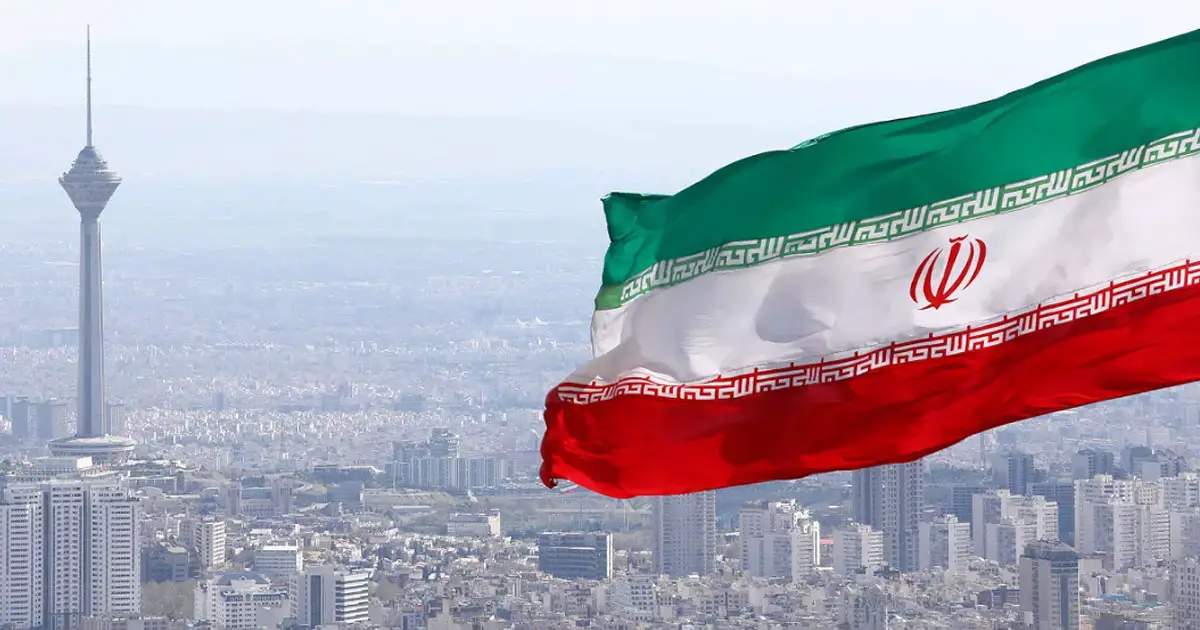
Iran, a country with a rich cultural and historical heritage, often remains a mystery to many outside its borders. While it's frequently in the headlines for political reasons, there are countless fascinating facts about Iran that are lesser known to the general public. Here are 10 such unknown facts about Iran:
1. Home to the Oldest Known Wine Production
Iran is considered one of the oldest wine-producing countries in the world. Archaeological evidence suggests that the production of wine in Iran dates back over 7,000 years. The ancient Elamites and Persians were among the first to produce and consume wine, especially in regions like Shiraz, which is still famous for its wine, despite the current ban on alcohol in the country.
2. A Rich Tradition of Miniature Art
Iran is famous for its miniature painting, which has been a part of Persian culture for over a thousand years. These small, detailed works of art often depict scenes from Persian mythology, royal life, and nature. Persian miniatures are considered masterpieces of art, known for their intricate details and vivid colors.
3. Iran Has the World’s Largest Persian Carpet Industry
Persian carpets are world-renowned for their beauty and craftsmanship, and Iran is home to the largest carpet industry in the world. Persian carpets are woven using intricate techniques that can take months, even years, to complete. Cities like Isfahan, Kashan, and Tabriz are the main hubs for carpet weaving, and these carpets are highly prized as art pieces.
4. The World’s First Charter of Human Rights
One of the oldest documents advocating for human rights is the Cyrus Cylinder, which dates back to 539 BCE during the reign of Cyrus the Great, the founder of the Achaemenid Empire (Persian Empire). Often considered the first declaration of human rights, it was issued after Cyrus conquered Babylon and granted religious freedom and civil liberties to the people under his rule.
5. Iran Has More Than 70% of the World’s Safavid Architecture
The Safavid dynasty (1501–1736) is credited with shaping the architectural landscape of Iran, with iconic structures such as Isfahan’s Imam Square, Shah Mosque, and the Ali Qapu Palace. Iran is home to over 70% of the world’s remaining Safavid architectural monuments, making it a significant center for art and design from this period.
6. Iran is One of the World's Most Diverse Countries
Iran is incredibly geographically and ethnically diverse. While it’s often associated with a single culture or ethnicity, it is home to more than 70 ethnic groups, including Persians, Azeris, Kurds, Lurs, Balochs, Arabs, and many others. This diversity extends to languages as well, with over 70 different languages spoken across the country.
7. The First Postal System in the World
The concept of organized postal services is believed to have been pioneered by the Persians under Darius the Great around 500 BCE. The Persian postal system, called the Angarium, allowed for fast communication across the vast Persian Empire, using mounted couriers and stations along well-maintained roads.
8. The Largest Historical Covered Bazaar
The Grand Bazaar of Isfahan, Tehran’s Grand Bazaar, and Tabriz’s Bazaar are among the largest covered bazaars in the world. However, the Tabriz Bazaar is particularly significant as it holds the title of being the largest historical covered bazaar in the world. It has been in operation for over 1,000 years and is a UNESCO World Heritage site.
9. A Diverse Cuisine Beyond Kebabs
While Iranian cuisine is often associated with kebabs, the country's food culture is highly varied. Iran has a wide array of dishes, with steamed rice (such as Chelo and Polow) forming the base of many meals. Fesenjan (a stew made with pomegranate and walnuts), Ghormeh Sabzi (herb stew), and Kuku Sabzi (herb frittata) are just a few examples of Iran's rich culinary traditions that often go unnoticed abroad.
10. A Land of Ancient Zoroastrianism
Iran is the birthplace of Zoroastrianism, one of the world’s oldest known religions, founded by the prophet Zoroaster around 1,500 BCE. Although now a minority religion in Iran, the Zoroastrian community remains active, and the country is home to ancient Zoroastrian fire temples, including the Atash Behram in Yazd, which houses the oldest continuous fire in the world, believed to have been burning for over 1,500 years.
Conclusion
Iran is a country rich in history, culture, and diversity. From the world’s oldest known wine production and the birthplace of Zoroastrianism to ancient human rights documents and architectural wonders, Iran offers countless hidden gems that the average person may not be aware of. These facts underscore the depth of Iran’s contribution to global culture, history, and civilization, beyond its current political landscape.

1. What is meant by "Gulf"?
In a geographical context, the term "Gulf" refers to a large area of sea or ocean that is partially enclosed by land. It's a body of water that is usually smaller than a sea but large enough to be significant. A "gulf" is often a key feature in maritime navigation, trade, and culture.
2. Why are Middle Eastern countries called "Gulf countries"?
The Middle Eastern countries referred to as "Gulf countries" are situated along the Persian Gulf (also known as the Arabian Gulf in some Arab countries). The term "Gulf countries" typically refers to the nations that border this body of water. These countries include:
Bahrain
Kuwait
Oman
Qatar
Saudi Arabia
United Arab Emirates (UAE)
Iraq (partially, with its coastline along the northern part of the Persian Gulf)
Iran (on the opposite shore of the Persian Gulf, though it is often excluded when referring to the "Arab Gulf countries")
These countries are often collectively referred to as the Gulf Cooperation Council (GCC) countries, as they share political, economic, and cultural ties, and they are members of an economic alliance called the Gulf Cooperation Council.
The name "Gulf":
The name "Gulf" comes from the fact that these nations are located around the Persian Gulf, a large inlet of the Arabian Sea. The Persian Gulf plays an important role in global trade, particularly for oil and gas, making it a highly strategic region. Historically, the Persian Gulf was vital for sea trade between Asia, Europe, and Africa.
3. Why the Confusion?
The term "Gulf" can sometimes be confused with "Golf", which is the sport involving hitting a ball into a hole with clubs. The similarity in pronunciation is purely coincidental.
However, the reference to "Gulf countries" has nothing to do with the sport of golf. It specifically relates to the geographical region surrounding the Persian Gulf, where these nations have shared cultural, historical, and economic interests.
Summary:
"Gulf" refers to the Persian Gulf, the body of water that is surrounded by the Middle Eastern countries, and these countries are often called "Gulf countries" due to their geographic location.
The "Gulf" term refers to a body of water, not the sport of golf.
.jpg)
The Middle East has some absolutely stunning places. Here are 5 of the most beautiful tourist destinations:
1. Petra, Jordan
The ancient "Rose City," carved into pink sandstone cliffs — one of the New Seven Wonders of the World.
Why?
It’s an ancient Nabatean city carved into rose-red rock.
The Siq, Treasury, and Monastery are incredibly well preserved and magical to explore.
It's a UNESCO World Heritage Site and one of the New Seven Wonders of the World.
2. Dubai, UAE
Iconic for its ultra-modern skyline, luxury shopping, the Burj Khalifa (world’s tallest building), and gorgeous desert safaris.
Why?
Home to architectural marvels like the Burj Khalifa and Palm Jumeirah.
Offers a mix of luxury, adventure (desert safaris), and cultural experiences.
Beaches, shopping, nightlife, and modern attractions are world-class.
3. Cappadocia, Turkey
Known for its surreal landscapes of "fairy chimneys," hot air balloon rides at sunrise, and ancient underground cities.
Why?
Unique rock formations ("fairy chimneys") create a fantasy-like landscape.
World-famous hot air balloon rides offer breathtaking sunrise views.
Rich in history with underground cities and cave churches.
4. Jerusalem, Israel
A deeply spiritual and historic city with sacred sites like the Western Wall, Dome of the Rock, and Church of the Holy Sepulchre.
Why?
Holy city for Judaism, Christianity, and Islam.
Historic sites like the Western Wall, Dome of the Rock, and Old City streets.
A spiritual and cultural experience unlike any other.
5. Musandam Fjords, Oman
Called the "Norway of Arabia," with dramatic cliffs, crystal-clear waters, and peaceful dhow cruises through the fjords.
Why?
Known as the “Norway of Arabia” for its dramatic sea cliffs and fjords.
Great for dhow cruises, dolphin watching, snorkeling, and kayaking.
Peaceful and untouched natural beauty.

Buying gold as a tourist can be exciting but also tricky if you’re not careful. Here are 7 smart tips to help you get the best value and avoid scams:
1. Know the Current Gold Rate
Always check the daily gold price (per gram or ounce) before you go shopping.
You can find this on Google or posted at most reputable gold shops.
2. Understand Karats
24K = pure gold (soft, used for bars & coins).
22K or 21K = common for jewelry (mix of gold and other metals for strength).
Know what you’re buying so you don’t overpay.
3. Compare Making Charges
Making charges = labor cost added to jewelry.
This varies a lot between shops — always negotiate and compare.
4. Look for Hallmarks
Make sure the gold is hallmarked for purity.
In Dubai, look for the Dubai Central Laboratories (DCL) mark.
In Saudi, check for the Saudi Assay Office stamp.
5. Always Ask for a Detailed Bill
Your receipt should include:
Gold weight and karat, Gold rate per gram, Making charge, VAT (if applicable), Hallmark info.
6. Avoid Airport Shops
Gold shops at airports usually charge more.
It's better to buy from local souks or reputed jewelry stores in the city.
7. Know the Customs Rules
Know how much gold you're allowed to bring back duty-free to your home country.
Exceeding the limit may lead to taxes or even confiscation.